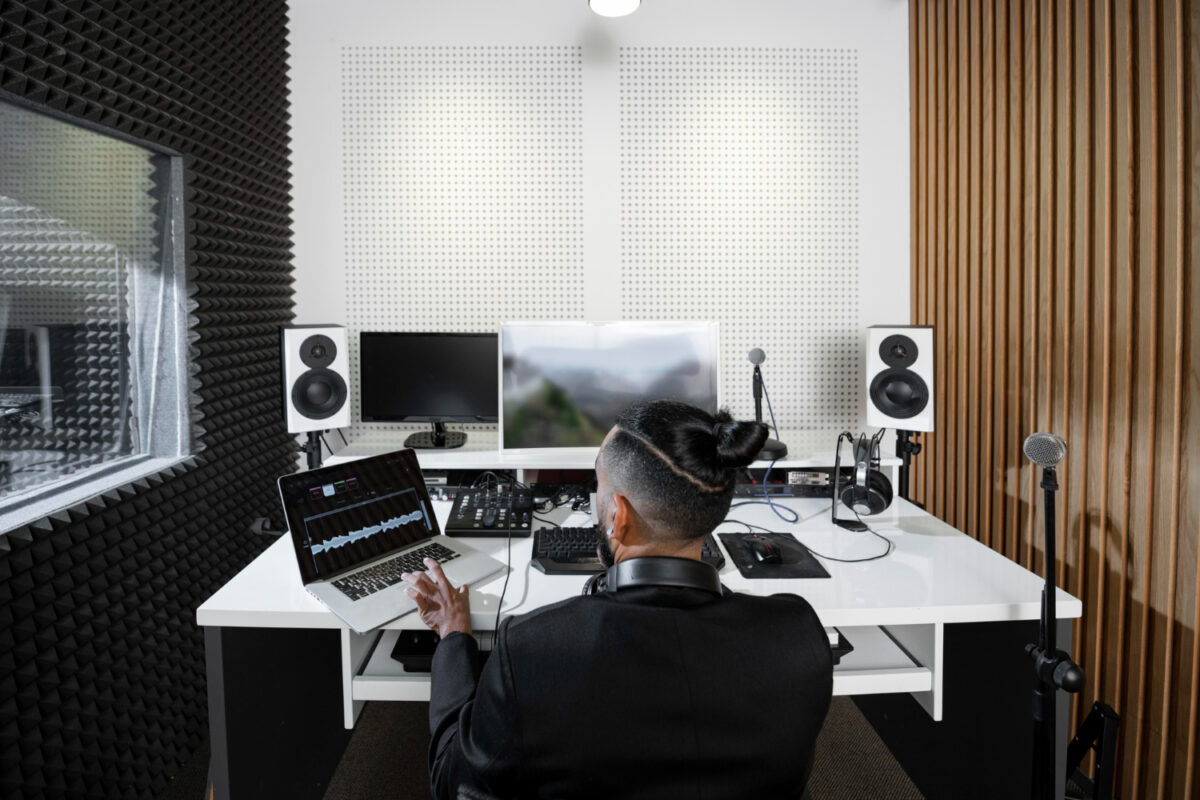
If you’re reading this, chances are you’re interested in learning how to design sound for a motion picture. And that’s great! Designing sound for the film is a hugely rewarding and creative endeavor. But where do you start? There are so many different aspects to consider, from Foley and dialogue to music and sound effects. It can all be a bit overwhelming at first.
Don’t worry, though – we’re here to help. In this blog post, we’ll break down the basics of film sound design, and by the end, you’ll have a much better understanding of how it all works. So let’s get started!
The main aspects of sound design for a motion picture
Designing sound for a motion picture is certainly an art form. At its best, best sound mixing results in an experience that can take the audience on a journey right alongside the film’s narrative.
To create this kind of captivating cinema piece, there are three main components of sound design:
- Field recordings. These are perhaps the core focus; they capture sounds from the filming locations to keep things authentic and add textures, such as street noise and footsteps.
- Foley work. It provides another layer, recording environmental sounds like water drops or wind gusts and adding them to scenes as required.
- The overlay track. It is important for adding themes or tones – whether for comedic turns or thrilling action scenes – encouraging viewers to fully immerse in the plot.
All in all, when each of these three aspects combines with skillful editing, the best films become truly immersive experiences.
How to create a soundscape that is believable and realistic?
To create a soundscape for a film that is believable and realistic, you have to mix the best of what you got.
Audio mixing is an essential part of achieving an immersive atmosphere for movie viewers – something that can just be achieved by careful assembling, positioning, and editing of different elements within a scene. It’s like painting with sound, adding a few here and there until you craft the perfect balance for your cinematic masterpiece.
Trust me, it’s best to make sure all the little details are included in your soundscape – you don’t want any disappointed moviegoers! So work on getting those perfect tones into the mix and watch your film come alive with life.
Common Foley techniques to enhance the auditory experience
Do you know those awesome sound effects that make movies so entertaining? You can thank Foley artists for creating them! Common Foley techniques used by filmmakers include Foley walking, prop use, and creating custom sounds.
To create a Foley step, artists walk on various surfaces, from gravel to hardwood, in order to mimic the character’s footsteps on-screen. Prop use includes kitchen utensils such as pots and pans or using unique items like baseball cards to replicate certain movements.
Finally, when all else fails, the Foley artist can get creative and create custom sounds – think of all the lightsaber and dinosaur noises you hear in various films – they’ve all been created! So hop into your Foley studio, grab some props and think outside the box – no one likes their movies silent!
Using sound design to create an emotional response in the audience
Sound design is the ultimate tool for creating an emotional response in film. When used with precise intention, sound can add layers of emotion to a scene that would otherwise convey nothing.
Certain sounds can create tension, suspense, or excitement, while others can evoke joy or melancholy moods. Cacophony design techniques – like emphasizing certain chords and using dissonance – can be used to deliver a powerful and dramatic impact on the audience. Even subtle adjustments in volume and frequency can affect how viewers interpret a moment in the film’s story.
Next time you’re watching a movie, explore how the director has employed sound to create an emotional journey. It might surprise you just how powerful those little noises are!
Things to keep in mind when working with dialogue
When working with dialogue in a film project, it’s best to keep some important tips in mind for sound design.
Prioritize the best sound mixing so that dialogues are clear with no background noises getting in the way. Keep your ears open for any odd buzzing or popping sounds and make sure each line of dialogue flows smoothly from one performer to the next.
Even if you think you’ve got it down, give it another listen and check if there’s anything that can be adjusted to make the dialogue even more natural-sounding and striking. Get creative and have fun – even the best sound designers know there is always room to polish!
Using music and sound design elements to create a powerful and impactful cinematic experience
Music is a surprisingly powerful tool for amplifying the emotions and excitement of a cinematic experience. In the right hands, it can take an audience on an unforgettable journey. Film composers are well-versed in scoring movies to complement visual elements with vibrant soundscapes, dynamic rhythms, and even subtle cues.
When paired with mindful sound design that adds sonic layers both loud and soft, music adds a heightened dynamic that captivates viewers and draws them into the world of film. By seamlessly weaving different audio components together in perfect synchronization, filmmakers can deliver an immersive audiovisual experience that leaves moviegoers around the world truly awestruck.
Conclusion
As you can see, there is a lot that goes into designing sound for a motion picture. However, with careful planning and execution, you can create a soundscape that is believable and realistic. Additionally, by incorporating common Foley techniques and working with dialogue and music, you can create an emotional response in your audience members. By keeping all of these aspects in mind, you can design sound for a film that will have a lasting impact on viewers.
Get in touch with us
Related Posts

Location-Based Sound Recording: 6 Expert Tips for Noise Reduction

Secrets of the Sound Booth: 5 Tips to Achieve Professional-Quality Voice-Over Recordings
About Us
Lorem ipsum dolor sit amet, consectetur adipiscing elit. Phasellus pharetra pretium leo, sed lacinia nulla. Quisque iaculis, lectus sed eleifend vehicula, mi elit facilisis purus, vitae ornare magna elit non quam.
Get in touch with us
Let’s Socialize
Get in touch with us

